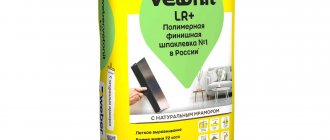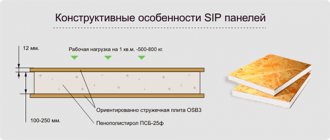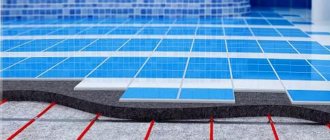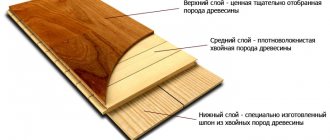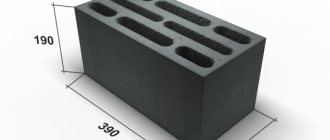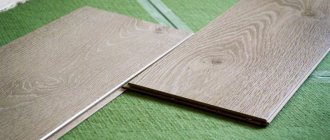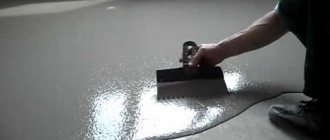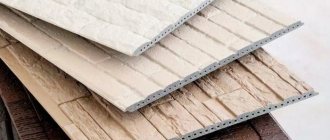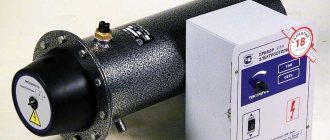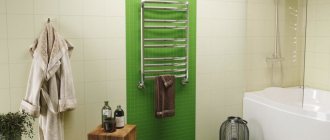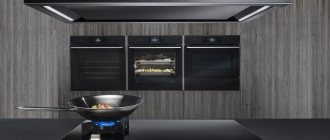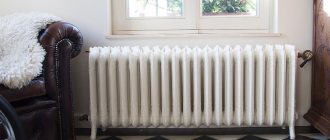Extruded polystyrene foam XPS (EPS) is a relatively “young” thermal insulation material that has gained wide recognition due to its unique combination of characteristics. The material does not shrink, does not absorb moisture and does not swell, and it is also chemically resistant and does not rot. Due to the high strength of polystyrene foam, it is possible to obtain a rigid base for the thermal insulation system, which significantly increases its service life. The material has many more advantages, which is what made it so widespread.
What is XPS Extruded Polystyrene Foam
Another name for extruded polystyrene foam XPS (eXtruded PoliStyrene) is extrusion. A similar term is applied to materials that are produced by extrusion - by forcing a viscous melt through a molding hole. First, polystyrene granules are mixed with foaming agents (freons or carbon dioxide-based compounds), then mixed under high pressure, and only then squeezed out of the extruder.
Extruded polystyrene foam has a fine-cell structure
At its core, expanded polystyrene is a plastic with evenly distributed closed cells measuring 0.1-0.2 mm. Externally, the material looks like a smooth plate - transparent or colored. The fine-mesh structure can be easily seen directly on the cut. The edges of the slabs can be straight or in the form of an L-shaped edge, which provides more reliable adhesion of the products during installation. You can explore different types of extruded polystyrene foam by going to the product catalog.
Main types
- pressless (made by drying polystyrene granules, brought to a foam-like state at a temperature of 80 ° C, these two processes are repeated again, then the mold is filled with everything, there it becomes knocked down when cooling; it turns out to be more fragile, but is used in production half as much isopentane, which makes the final product cheaper)
Brands of pressless foam
- extruded (it is called an extruder, because they use similar equipment in production, we will consider it later in the article)
- extrusion (field of application is packaging in the food industry)
- pressed (becomes more durable)
- autoclave
Characteristics of extruded polystyrene foam
The interest of many consumers in extruded polystyrene foam was caused by its high performance. You can easily verify this by considering the main characteristics of the material:
- Thermal conductivity coefficient – λ = 0.029 W/m·K. The lowest rate among all existing insulation materials, even lower than that of the softest mineral wool board.
- Density (specific gravity) – 25-45 kg/m3. Provides lightness of the slabs, ease of installation, as well as low cost of handling and ease of storage.
- Water absorption – 0.2% at full immersion. Since the indicator is very low, sometimes it is even neglected in calculations. Such insignificant moisture absorption is ensured by the closed cell structure. Water cannot penetrate them under any circumstances, only if the integrity is broken when the slab is cut. But even in this case, the absorption of water is negligible.
- Compressive strength at 10% deformation – 15-100 t/m2 (150-1000 kPa). According to this parameter, XPS meets the most stringent requirements for insulation materials.
An example of insulating a brick wall using extruded polystyrene foam
Advantages of extruded polystyrene foam
The advantages of XPS expanded polystyrene also stem from its unique characteristics, the list of which is supplemented by:
- High frost resistance – withstands temperatures down to -70 °C without loss of properties. Allows the use of the material at extremely low temperatures, even in the Far North.
- High degree of fire resistance. This is achieved through additives – fire retardants, which are added to the composition of polystyrene foam. This makes the material self-extinguishing, meaning it will only burn when in direct contact with a fire source.
- Chemical resistance. XPS is not affected by acids, oils, alkalis, alcohol, saline solutions, dyes, ammonia and many other substances.
- Safety for humans. It is allowed to use the material in children's and medical institutions.
- Biostability. Eliminates the occurrence of mold and mildew on the material, since it is not a breeding ground for them.
- Durability. XPS has a service life of up to 45 years.
Disadvantages of XPS Expanded Polystyrene
- Insufficient vapor permeability – 0.007-0.008 mg/m·h·Pa.
- Flammability. Even despite its self-extinguishing properties, the material burns when in contact with fire.
- Low sound insulation. Compared to mineral wool and polystyrene foam, polystyrene foam protects less well from external noise.
- Blowability of seams. It occurs due to the rigidity of the material, but this problem can be solved by laying slabs with bandaging. For example, if the calculation requires slabs with a thickness of 100 mm, then you need to buy 50 mm slabs, but 2 times larger.
Polystyrene foil mats
Foiled polystyrene foam with markings
FPS is able to increase the overall energy efficiency of the facility, retain heat, and significantly reduce the cooling properties of the cement foundation on which the floor covering is installed due to its high sealing characteristics.
The solution to the problem of creating a warm floor today is FPS profile slabs. They have high mechanical strength. On top they are covered with a rigid vapor barrier film. Their surface has a special molding, which allows for reliable and convenient fastening of heating pipes of different diameters. They are laid hermetically, thanks to the side locks, reliable adhesion of the structure is ensured, which eliminates the divergence of the seams. An additional ruler is applied to the sides of the slabs for convenient adjustment of the elements; the embossed lower surface smoothes out unevenness of the flooring and helps absorb noise.
Where is XPS expanded polystyrene used?
Due to low vapor permeability, XPS is not recommended for use in the interior of residential and public buildings. Otherwise, the microclimate inside the facility will not be very favorable.
The use of XPS for interior work is permitted only in buildings that are equipped with a reliable forced-air supply and exhaust ventilation and air conditioning system. This is especially true for multi-storey buildings, where it is impossible to insulate the outside of the building and have to do it from the inside.
In other cases, XPS polystyrene foam is very widespread, especially in Russia, where there are a lot of wet and swampy soils. The unique properties of the material allow it to be used for insulation:
- foundations,
- roofs,
- floors,
- facades.
Work on building insulation with extruded polystyrene foam
Extruded polystyrene foam can be used to insulate various engineering structures, private and industrial construction sites, namely the floors of the first floors, basement and semi-basement basements. In the case of facades, such insulation can be used both in the “wet” method (plaster) and when installing a ventilated frame structure under siding. The scope of application of XPS expanded polystyrene also includes insulation:
- tunnels;
- highways on permafrost and heaving soils;
- airports;
- parking;
- garages;
- runways.
The use of extruded polystyrene foam for insulation under siding
Exploitation
The raw material called expanded polystyrene is in great demand and this is due to its low price. Mainly, the building material is used for insulation work and during construction and repair work. It is also used as a heat insulator in some types of household appliances and industrial installations. It is used in the development of refrigerators, thermal vans, and containers. Another area where expanded polystyrene has found application is the packaging process.
As for insulation work for external and internal wall surfaces, preference is given to polystyrene foam of the PSB-S brand. It is characterized by different densities, as well as a high level of breathability, which cannot be said about the extruded version of the foam. The use of PSB-S foam plastic is an excellent opportunity to create a comfortable climate inside residential buildings.
For external insulation of wall structures, it is advisable to use PSB-S slabs.
If ceiling finishing is needed, then preference is given to polystyrene foam boards. As a rule, their dimensions are 500.0×500.0 millimeters. The raw materials delight with a rich color palette.
The operation of PPP in the process of construction manipulations allows you to achieve the following results:
- reduce the price of work, as well as the time it takes to complete insulation work;
- expand the usable area of a residential building by reducing the thickness of the external walls;
- increase the environmental performance of the structure;
- reduce space heating costs.
Insulation of the attic Source re-home.su
Differences between XPS and EPS polystyrene foam
There are 2 types of expanded polystyrene: extruded (XPS, eXtruded PoliStyrene) and foamed (EPS, Expanded PolyStyrene). In terms of chemical properties and thermal conductivity, the materials are very similar to each other, but some of their properties are fundamentally different:
- Compressive strength.
It is higher for XPS, but this is not important in all cases. Engineers determine the required strength. For most projects, EPS is sufficient, which allows you to save money on the budget, but for work with the foundation, XPS is still recommended, since it requires high-performance thermal insulation.
- Moisture retention.
Another argument in favor of using XPS for insulating the foundation and the soil around it (to prevent freezing), since this material does not absorb water. It is recommended to exclude the use of EPS in such cases. It has low water absorption (2%), but in the case of insulation of the foundation this can be critical. Soil in direct contact can cause the EPS to deteriorate over time.
- Insulating ability.
EPS has exactly the same vapor permeability as wood, and wooden houses are considered the most favorable in terms of microclimate. The XPS cannot boast of such properties. When insulating the walls in the house with it, the humidity slightly increases and the air exchange decreases. In this regard, when carrying out interior work, XPS is most popular in cases where it is necessary to reclaim square meters, for example, on a loggia. Here, the use of XPS will eliminate dampness of the walls and provide the required degree of thermal insulation without increasing its layer.
Vulnerability of polystyrene
Expanded polystyrene insulation material is resistant to a number of salts, alkalis, etc. However, varnish, drying oil, turpentine, acetone, etc. the material may be damaged.
Exposure to these substances may cause the extruded polystyrene foam to dissolve. A similar effect can occur when exposed to alcohol or certain petroleum products.
Any foam material will be negatively affected by direct rays of the sun. Ultraviolet irradiation reduces the strength and elasticity characteristics, the material becomes vulnerable to weather and precipitation. Its structure is completely destroyed by wind, rain or snow.
Popular manufacturers of extruded polystyrene foam
The number of companies producing XPS foam is growing steadily, but a few manufacturers still remain in the lead. Among them there are both domestic and foreign companies. The most popular of them are presented in the table.
| Name | Logo | A country | Product Features |
| Eryap | Türkiye | The company produces Bonuspan expanded polystyrene panels. The capillarity of the material is practically zero. | |
| IZOCAM | Türkiye | In the production of XPS boards, the company uses developments from American companies. The latest technologies allow the manufacturer to use lightweight but durable material. | |
| "Elite-Plast" | Ukraine | The large-area production complex allows the production of extruded polystyrene foam on an unlimited scale. The products comply with the Kyoto Protocol, therefore eliminating environmental pollution. The products are produced under the Penoboard brand, predominantly blue in color. | |
| "TechnoNIKOL" | Russia | The company produces its own types of XPS expanded polystyrene - "TechnoNIKOL" and "TECHNOPLEX" for insulating loggias, floors, balconies, foundations and walls in basements. | |
| "PENOPLEX" | Russia | Another large Russian manufacturer of EPS. In line extruded polystyrene foam XPS "PENOPLEX" bright orange slabs are presented:
| |
| Fibran | Greece | Fibran Eco XPS boards are environmentally friendly because they do not use freon in their production, which makes the material absolutely harmless. The production of the material is organized in Bulgaria. The slabs have a bright turquoise color. | |
| Ursa | Germany | One of the well-known European companies that produce insulating materials. The XPS URSA expanded polystyrene line includes predominantly white slabs with a thickness of 30-100 mm and a density of 30-50 kg/m3 in several varieties:
|
The widest range of extruded polystyrene foam from
The assortment of popular domestic products includes variations of insulation for a variety of areas of construction. The most common versions of the material:
- Extruded polystyrene foam "TechnoNIKOL" XPS Carbon Eco . Contains carbon particles that increase strength, reduce thermal conductivity and give the material a lightened tone with a silvery tint.
- "TechnoNIKOL" Carbon Prof. Professional building material. It has high strength and the lowest thermal conductivity coefficient. Suitable for almost all types of foundations. The line also includes slabs for creating a slope on a flat roof (Prof Slope).
- "TechnoNIKOL" Carbon Eco Drain. Designed for lining wall drainage, for which it is equipped with drainage channels or ribbing. By using this material on flat roofs, you can get rid of stagnant water.
- "TechnoNIKOL" Carbon Eso Fas. This type of slab is distinguished by a characteristic milling, which ensures particularly high adhesion to the base. The use of the material is relevant for plinths and plaster facades.
- "TechnoNIKOL" Carbon Sand Mon. Special slabs for thermal insulation of monolithic buildings. Used as an insulation layer for sandwich panels. There are also analogues of these boards: Sand PVC for PVC sandwich panels and Sand VAN, designed for thermal insulation of isothermal cars.
Extruded polystyrene foam XPS "TechnoNIKOL"
XPS line of extruded polystyrene foam also includes:
- “TECHNOPLEX 30 250” (λ = 0.027 W/m K).
- “TECHNOPLEX 35 250” (λ = 0.028 W/m K).
- “TECHNOPLEX 45 500” (λ = 0.030 W/m K).
"TECHNOPLEX" was developed mainly for private and country houses. The material is distinguished by the use of nanographite in the production, which increases strength. Due to the addition of graphite particles, the plates acquire a light silver color, thanks to which they can be easily distinguished from ordinary ones.
Adding polystyrene chips to concrete
To give the concrete layer additional protective characteristics, granules of extruded polystyrene foam can be added to the solution (the latter can be purchased for about 1000-1800 rubles per cubic meter). This is done as follows.
Foam balls for concrete can be purchased pre-packaged
Step 1. A little water is poured into the prepared container, then dry cement is poured into it. All this is mixed with a mixer attachment until the consistency of thick sour cream.
Mixing the solution with polystyrene balls
Step 2. During the mixing process, polystyrene foam granules are added. The proportions of concrete can be very different - both 1:3 and 1:6.
The more granules there are, the more efficiently the floor will retain heat. But there is also a downside to the coin - this will deteriorate the strength, and the surface will begin to crumble under load. In short, the required ratio of polystyrene foam depends directly on how hard the floor covering should be.
Foam chips (expanded polystyrene granules)
How to calculate the amount of extruded polystyrene foam
One of the simplest methods for calculating the amount of thermal insulation material is based on the surface area that needs to be insulated. To do this you need:
- Take plans, facades or wall layouts - it all depends on what you are going to insulate.
- Having determined the length and width of the insulated surface, calculate its area - S, m2. For example, let's take a value of 10 m2.
- Take the area of one expanded polystyrene slab - P, m2. For example, extruded polystyrene foam “TechnoNIKOL CARBON ECO 1180x580x30 mm” has an area of the largest side of 1.18 · 0.58 = 0.6844 m2.
- Next, divide the area of the entire insulated surface by the area of one slab and multiply by 1.05-1.1 (for reserve for scraps) - S / P · 1.05 = 10 / 0.6844 · 1.05 = 15.34 pcs. When rounded to the nearest whole number you get 16 pieces. – this is the number of slabs required to insulate a surface of 10 m2.
Insulation of concrete floors using joists
This method of thermal insulation involves laying insulation between the joists, which are installed on a concrete base. The algorithm of actions is given below.
Step 1. First, the old floor covering is dismantled, the surface is cleaned of debris and dirt. Then the base is leveled in the same way as described in the previous paragraph of the article.
Step 2. Waterproofing material is laid (polyethylene film is suitable) with a minimum overlap of 10 cm. All joints are sealed with mounting tape.
Step 3. Next, the logs are installed. The pitch depends on the width of the extruded polystyrene foam sheets, and the height depends on the thickness (5 cm, 10 cm or 15 cm). To fix it on the supporting plate, holes are made in the logs, then the guides are installed according to the previously made marks and secured with driven dowels.
Step 4. Insulation boards are laid, a regular knife is used for cutting.
Insulation of concrete floors using joists
Photo of how to properly lay insulation and joists on the floor
Step 5. A vapor barrier material is attached to the joists on top of the insulation.
Step 6. Next, a durable material is laid (often OSB boards), on top of which the flooring will be laid. The plates are fastened with self-tapping screws in increments of 30 cm; between them (the plates) you need to leave a small gap (about 3 mm) for temperature and humidity compensation. This installation method is called “floating” and it provides for a gap between the walls and slabs of at least 1.2 cm.
An example of attaching a floorboard over insulation
Important information! For greater reliability of fastening, the slabs can be glued to the guides using special wood glue.
All that remains is to lay the flooring.
Video - Thermal insulation with polystyrene foam on joists
Video description
Since not all manufacturers indicate this parameter, you need to be able to determine it yourself.
How to do this is shown in the video: The quality of products also varies and depends on the manufacturer’s compliance with manufacturing technology. Some introduce harmful additives into raw materials or do not use recommended components. Sometimes ordinary polystyrene foam is sold under the guise of EPS. To be sure of quality, you should buy certified products manufactured not according to the manufacturer’s technical specifications, but according to GOST.
Advice! You can verify good quality by performing a simple test. You need to break off a piece of material and inspect the fracture site - small regular polyhedra should be visible on it, not balls.
Depending on the place of application, choose slabs with a stepped edge or a corrugated surface, which facilitates the application of a plaster layer on it.
Video description
Watch a video about roof insulation over solid flooring:
On the formwork
To make permanent formwork from extruded polystyrene foam slabs, you will need special plastic ties with which the opposite walls of the formwork are fastened to each other and fixed at a certain distance.
The design of the ties allows you to change this distance and has special sockets for fixing the reinforcement cage bars.
Mounted formwork with a steel frame Source homemasters.ru
How to cut EPS
When carrying out thermal insulation work, EPS boards often have to be cut, cutting out pieces of the desired shape and size. Since the material is quite soft, this can be done with a knife, the main thing is that its blade is very sharp, durable and thin, otherwise the material will crumble.
Advice! To get rid of the strong squeaking noise that accompanies cutting, the knife blade can be periodically moistened with machine oil.
Another suitable tool for cutting is an angle grinder (simply an angle grinder) with a metal disc. The thinner it is, the less debris and dust will be generated, and the cleaner the cut will be.
There are also special tools for cutting foam plastic that work on the principle of thermal cutting - special machines and “hot knives”.
Thermal cutter for polystyrene foam Source allegroimg.com
It makes no sense to buy such equipment for one-time use, especially since a cutting machine can be made with your own hands from nichrome wire stretched between two driven nails. To make the wire glow, the nails are connected to a transformer and voltage is applied to them.
It is important! The thermal method of cutting polystyrene foam can only be used in the fresh air or when using personal protective equipment such as a respirator or gas mask, since when it is heated, toxic substances are released that can be harmful to health.
Homemade machine option Source pochini.guru
Installation of reinforcing mesh
Only after approximately 24 hours have passed can you begin sanding the polystyrene foam surface and then gluing the reinforcing mesh to the wall. Here is the sequence in this case:
- the adhesive composition is applied to the prepared insulation surface;
- mesh is glued;
- then another layer of glue is applied, closing the glass mesh between two layers of the applied composition.
It is better to start gluing the mesh to the wall from the corners, but you should not sound the alarm if the edges of the fragments overlap one another. Ideally, they should generally extend to about 2 thirds, which helps to better strengthen the mesh and perform its direct function.
Rules for carrying out installation work on walls and ceilings
Rigid lightweight boards are used for thermal insulation of horizontal and vertical structures inside and outside the building, in heated and cold rooms. The material is fixed to walls and ceilings using the adhesive method. The sequence of actions is as follows:
- cleaning the base from old finishes and flaking elements;
- removal of foci of biological damage and rust, followed by protection from reappearance with antifungal and anti-corrosion agents;
- strengthening walls and ceilings by reinforcing cracks and corners, impregnating them with strengthening primers;
- leveling the surface with plaster followed by re-priming,
You need to choose a specialized adhesive for polystyrene foam, and it is important to pay attention to the working thickness of the solution (or dry residue). Apply the composition to the slabs in an even layer using a comb. The size of the teeth is determined by the parameters of the permissible thickness (multiplied by 2). To ensure that the end edges remain clean, which is necessary for a tight fit, the glue is applied within 1.5-2 cm of the edges.
Adhesive for polystyrene foam Source davran.ru
The next step is additional fastening of the polystyrene foam boards to special dowels for insulation. This is a fastener with a wide plastic cap that presses and holds the blade at the base in a given position. It is better to perform fixation after the glue has hardened, so as not to create unnecessary voids that can become cold bridges.
The gaps between the edges of the slabs can be filled with polyurethane foam. The material has similar characteristics to expanded polystyrene, so you don't have to worry about thermal expansion or adhesion. The main thing is to follow 2 rules: the polyurethane foam must have low expansion, the procedure is performed only after the glue has dried.
It is worth paying attention to another way of fixing polystyrene foam to a flat plane - using polyurethane foam or glue in the form of cakes. Such options are acceptable, but it is better to properly prepare the surface and apply the adhesive mass in a continuous layer. This way you will get the highest quality and most durable results.
Application of polyurethane foam Source sdelai-lestnicu.ru
Briefly about the main thing
We can say about the EPS board that it is a universal thermal insulation material for all structural elements of buildings. It retains heat perfectly, insulates noise, is not afraid of water and weighs almost nothing. But its scope of application is limited by two factors: toxicity when heated and very low vapor permeability, due to which expanded polystyrene is not recommended for insulating wooden houses. The quality of the material depends on strict adherence to the production technology regulated by GOST. And its installation is quite simple and accessible even for beginners in construction.
Ratings 0
